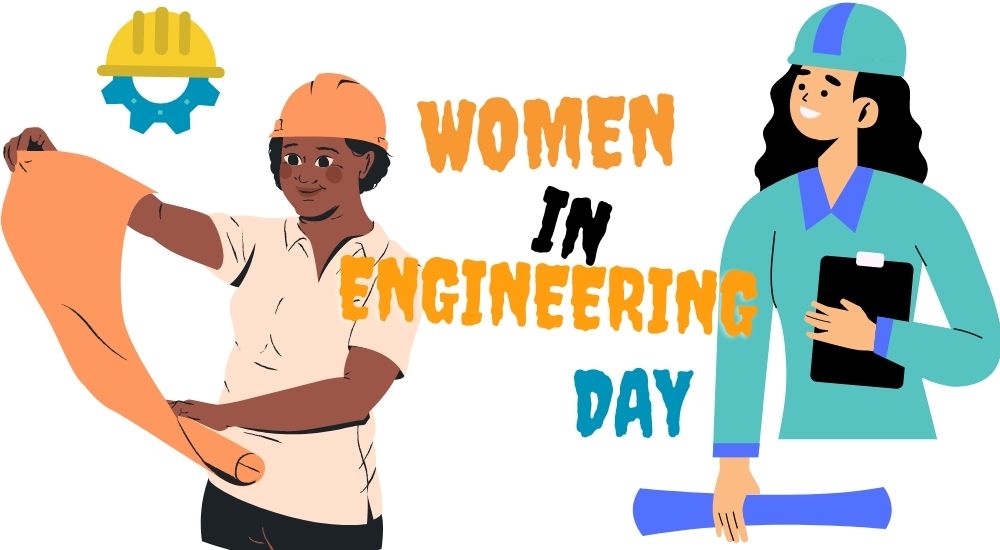Updated January 15, 2023
International Women in Engineering Day is celebrated every year on June 23 to honour women in the field of engineering. Basically, it’s an international awareness campaign to raise the profile of female engineers. The way we live today is a result of the leaps and bounds in the engineering field.
The advancement in science and engineering is allowing us to live easier lives, live in better homes, use better modes of transportation, and so on. Although even today, engineering is a male-dominated sector International Women in Engineering Day reminds us that actually, it’s far from it.
In fact, women are doing great in this field, and even better than males in some scenarios. So, International Women’s Day is all about women achieving remarkable feats against all odds, and demonstrating their capabilities.
History of International Women in Engineering Day
On June 23, 2014, the Women’s Engineering Society (WES) introduced International Women in Engineering Day for the first time in the UK, in honour of its 95th birthday. The day has grown tremendously from its first inception in 2014 to the point that it was recognized by UNESCO in 2016.
Due to the interest and passion developed by the international audience and participants, International Women in Engineering Day was officially recognized internationally for the first time in 2017.
The goal of International Women in Engineering Day is to increase public awareness of the amazing achievements made by women who pursue engineering careers. Even before the name “engineer” was first used in the 11th century, women played a crucial part in the design and construction of important structures and machinery for millennia.
Upon the establishment of educational institutions, most universities didn’t allow women until the early 1800s. Even then, only traditionally “female” fields were eligible for entry. However, this has never stopped women from working in the engineering field.
Elizabeth Bragg got her bachelor’s in civil engineering from the University of Berkeley in 1876, breaking the glass ceiling for women in the 19th century who wanted to pursue engineering but were prevented from doing so by gender stereotypes and prejudice.
Also, we must not overlook the fact that Ada Lovelace, a woman, worked with Charles Babbage to create the first computer program ever. All governmental, educational, institutional, and corporate engineering organizations are encouraged to organize events to support the day.
Encouraging great opportunities for women in engineering is an important part of this day, women must be encouraged to pursue careers in engineering.
Timeline International Women in Engineering Day
1876–> The First Woman in Engineering
1894–> The First Female Engineering Graduate in Europe
1919–> A New Order of Women
2014–> A Celebration of Excellence
How to Celebrate International Women in Engineering Day?
The history of women in engineering is extensive and fascinating, going all the way back to the First World War. Today, take the time out of your day to read up on some of the remarkable things that women have achieved in engineering in the last 100 years.
Many early female engineers go unnoticed. On Women in Engineering Day, we honour innovators who have made significant contributions to the engineering sector, like Kimberly Bryant, the founder of the nonprofit Black Girls Code, which offers free coding instruction to young African-American girls.
The field of engineering offers countless options for career growth. The rosy dreams of becoming a doctor or a pilot continue to cast a shadow over such a practical work choice. On June 23, we encourage young ladies to learn more about engineering and carve out a career in this demanding but exciting field.
The purpose of Women in Engineering Day is to support women who have chosen unorthodox occupations in STEM. The day provides a forum for female engineers to discuss the difficulties they encounter navigating a male-dominated area and their experiences working in a technical industry.
To help spread the word to educational institutions like schools and colleges, you can donate to the movement if you wish to get more actively involved. It celebrates the exceptional achievements of women engineers throughout the world.
It’s your day, so participate in this annual event! By informing your friends about the day. Owners of Organizations can participate by sponsoring the event. The ultimate objective of the day is to ensure that equal numbers of men and women are contributing to the development of the engineering landscape in the future, allowing us to equally improve and grow.
5 Facts of Women in Engineering Day
- Only 24% of engineering graduates build a career in their major.
- Men in STEM make $15,000 more than their female counterparts.
- Men make up 72% of the STEM workforce.
- Girls perform better than boys in math yet they make up only 21% of all engineering students.
- White women make an average of $60,828 per year, as opposed to Latina and Black women, who make only $33,000 per year.
Most Frequently Asked Questions
Ans: Computer science (45.76 % pursued it) is the most popular branch among girls, followed by Electronics (34.57 %), Electrical (14.3 %), Mechanical (3.72 %), and Civil (1.59 %) engineering.
Ans: Women make up about 14.5 % of all engineers. Compared to the whole workforce, women have increased their participation in engineering occupations by 25.7 % since 2016. From 721,586 in the second quarter of 2016 to 906,785 in the third quarter of 2020, more women are now employed in engineering-related fields.
Ans: Yes, engineering for girls is a great option!
Ans: No, it’s not difficult at all. The demanding nature of this field has kept women out of this vocation for years, but being a woman in engineering is not difficult.
